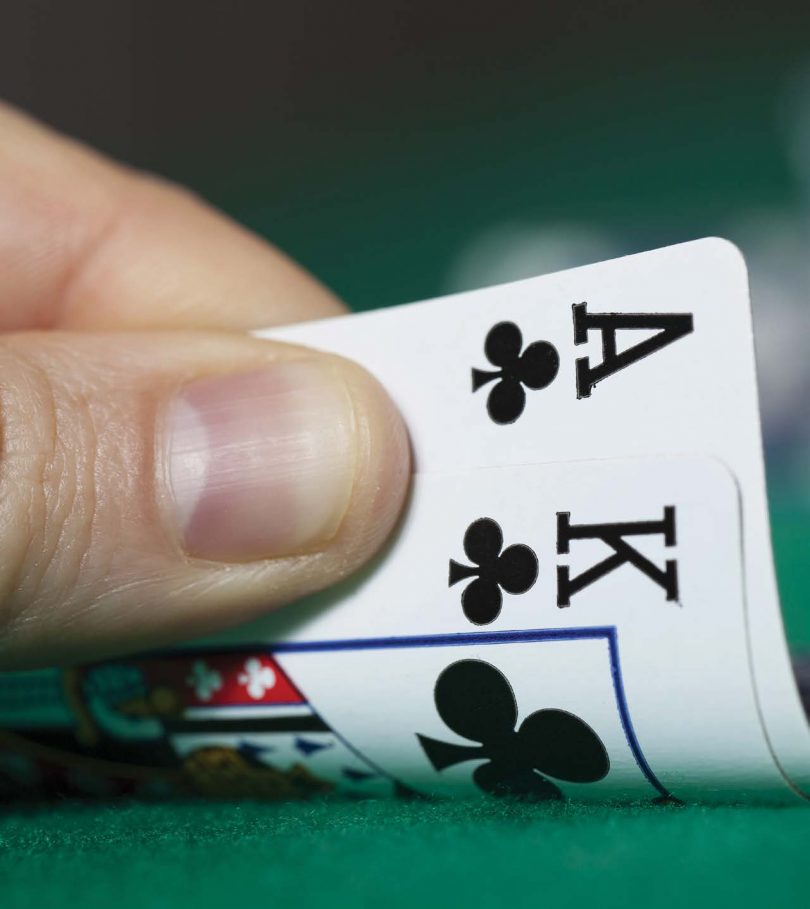For many players, 3-betting opponents on the button is a reflex action – but how often do you put genuine thought into your actions? WGM takes a closer look at the art of 3-betting and how we should implement it into our game.
They say poker is a game that takes hours to learn and a lifetime to master, but that doesn’t tell the full story. New players to the game tend to learn in stages. They’ll start with the absolute basics such as hand rankings, then move onto betting, then learn concepts such as the advantages of late position versus early position and so on.
Inevitably, once they’ve mastered the basics, they will stumble upon the 3-bet. This, of course, is by far the most common “move” you will find at the poker table and in regards to pre-flop betting refers to a situation where one player opens the action with a raise only for another player to re-raise over the top. For example, with blinds at 50/100, Player A raises to 300 only for Player B to 3-bet to 800. The pressure is now on Player A to decide whether they should fold, call, or re-raise again (which is known as a 4-bet).
Astute players will quickly recognize the power of position when it comes to 3-betting which is why you’ll see this so often from late position, especially the button. After all, it’s not usually wise to call a 3-bet with a medium strength or speculative hand from out of position because it will usually be very difficult to play well on future streets. Alas, one of the biggest mistakes inexperienced players make is 3-betting for 3-betting’s sake. They see other players 3-betting liberally from the button so they start doing it too.
The problem with this is it ignores one of the basic premises of a good poker player – that every action must have a reason. And in the case of 3-betting, this reason should be based just as much upon what you know of your opponent as the cards in your hand.
Let’s look at three common opponent types and ways to formulate your 3-betting plan against them. We’ll classify them into players who will fold to your 3-bet most of the time, players who will call your 3-bet most of the time and players who like to 4-bet over your 3-bet on a regular basis rather than call. Each must be treated differently.
- Players who fold to 3-bets a high percentage of the time are a dream to play against, because on the rare occasions they 4-bet you their hand range will be pretty obvious. The fact these players are so willing to fold means that you could show a pretty decent profit by 3-betting any two cards, but even the most basic of opponents would catch onto what you’re doing eventually and adjust so it’s best to avoid that tactic. Instead, look at raising with a polarized range – either very strong hands such as Aces through Queens or AK; or complete trash such as 72. If we know our opponents are almost never calling, are often folding and only 4-betting when strong then we can raise with weak hands knowing it’s an easy fold for us on the rare occasions they play back. Hands with good post-flop playability such as suited connectors or KQ are best to call with rather than 3-betting, allowing you to use your position to good advantage post flop.
- Players who rarely fold to your 3-bet are obviously a trickier proposition than those who will simply fold as their default action, but they can also be highly exploitable and if you adjust your 3-betting range accordingly you can really apply the pressure. Step one is to eliminate those trash hands from your raising range. Although we can raise hands like 72 or 93 when we expect our opponent to fold, the last thing we want is to find ourselves having to play post flop with such weak hands. Having said that, we can increase our range of value hands with which to 3-bet so as well as our big pairs and AK we can also 3-bet with hands such as AJ, KQ and medium pocket pairs safe in the knowledge that we are well ahead of our opponent’s calling range. It’s also important against this type of player to pay attention to how they respond post-flop. If they call a lot of pre-flop 3-bets but usually check-fold to a c-bet we can be more liberal with our 3-bets and throw in hands such as suited connectors. Our opponents will still fold to enough c-bets to make this profitable and there is the added advantage of being able to flop a strong hand or big draw that is well disguised because we showed strength pre-flop. Remember that the natural tendency of many players is to assume we have high value cards when we 3-bet pre-flop.
- Players who constantly 4-bet over the top of your 3-bets and rarely call can be highly frustrating – unless you know how to handle them. Many inexperienced players will take the entirely wrong line in combatting them and start shoving over those 4-bets with hands they really should be folding – weak Aces, KJ and so forth – all the time overlooking the fact that when their shove is called they are usually going to be in pretty bad shape. If your opponent is opening a wide range of hands then you can call rather than 3-bet with hands that play well post-flop as well as hands that are likely to be best but can’t stand a 4-bet, such as AT suited. This means that you need to restrict your 3-betting range to value hands, although the up-side is that your value range can be expanded. Something like AQ+ and 88+ is a pretty good base but of course this can vary depending upon the frequency with which your opponent is both opening and 4-betting. It is important, however, that if you find yourself in this situation then you must implement your plan of 5-bet-shoving over your opponent’s 4-bet. Your plan is not to 3-bet-fold.
Now we have a solid base from which to utilize the power of the 3-bet when we have position on our opponent, but what about when we are out of position or, more specifically, when we are in the blinds and facing an opening raise from the button?
We know that, with position on their side, the majority of players are going to open their button with a wide range, which means we’re often going to have the best hand when we’re in the blinds even with weak Aces or a couple of picture cards. At the same time, position is important and it’s easy to get yourself into trouble by calling when we should be raising or folding, or raising when we should be taking another line.
The first thing to be aware of when considering 3-betting from the blinds is that your opponent is more likely to call when in position because of the advantages that position usually provides. In other words, where he might fold or 4-bet a hand such as A5 suited when out of position, he will call when in position.
This means you should generally avoid playing speculative hands such as suited connectors but should 3-bet hands such as AJ or KQ. Although you will occasionally run into trouble with these hands when your opponent calls your 3-bet with AK, you will more often be able to extract value when you hold, for example, AJ on an A-high flop and your opponent is calling your 3-bet with any Ace.
Once you become more accustomed to your opponent’s calling ranges you might even bring hands such as suited Aces into your 3-betting range with the plan being to c-bet most reasonable flops and double barrel or triple barrel missed boards should you turn a flush draw or even a good scare card. Note, however, that 3-betting weaker Aces like this is situation dependent and shouldn’t become a default play.
The important thing to take from all of this is the importance of planning and of doing things for a reason. Rather than 3-betting out of habit or because “aggression is good”, take the time to study your opponents and act accordingly. Your bankroll will thank you in the long run.







